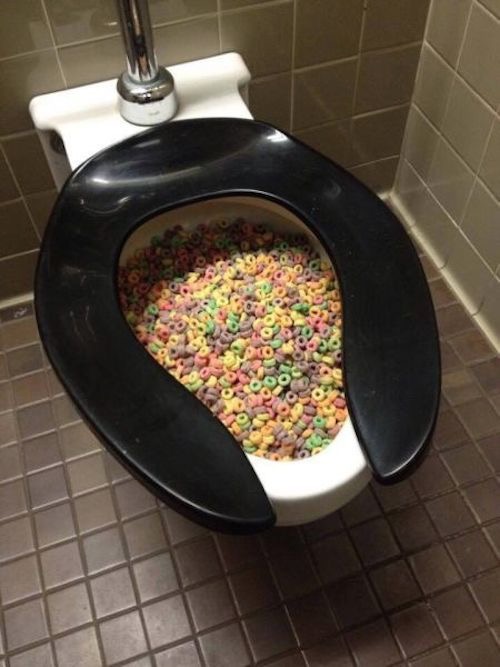Can One to Dispose of Food in the Toilet?
Can One to Dispose of Food in the Toilet?
Blog Article
We've encountered the article involving Is it safe to flush food (especially rice) down the toilet? down the page on the internet and concluded it made perfect sense to quickly share it with you over here.

Intro
Many individuals are usually confronted with the issue of what to do with food waste, particularly when it pertains to leftovers or scraps. One common inquiry that develops is whether it's alright to purge food down the bathroom. In this article, we'll explore the reasons individuals may consider purging food, the consequences of doing so, and alternative techniques for correct disposal.
Reasons individuals might think about purging food
Lack of understanding
Some people may not recognize the prospective damage brought on by flushing food down the commode. They may incorrectly believe that it's a safe technique.
Ease
Purging food down the toilet may look like a quick and very easy remedy to dealing with unwanted scraps, especially when there's no neighboring trash bin available.
Idleness
In many cases, individuals may simply choose to flush food out of large idleness, without taking into consideration the repercussions of their actions.
Consequences of flushing food down the commode
Environmental impact
Food waste that winds up in waterways can contribute to air pollution and harm marine ecosystems. In addition, the water used to purge food can strain water sources.
Plumbing problems
Flushing food can cause clogged pipelines and drains pipes, creating costly plumbing fixings and hassles.
Sorts of food that should not be purged
Fibrous foods
Foods with coarse textures such as celery or corn husks can get entangled in pipes and trigger blockages.
Starchy foods
Starchy foods like pasta and rice can soak up water and swell, resulting in blockages in pipes.
Oils and fats
Greasy foods like bacon or food preparation oils need to never ever be flushed down the commode as they can strengthen and create blockages.
Proper disposal methods for food waste
Using a garbage disposal
For homes geared up with garbage disposals, food scraps can be ground up and flushed through the pipes system. Nonetheless, not all foods appropriate for disposal in this way.
Recycling
Certain food product packaging products can be recycled, reducing waste and reducing ecological effect.
Composting
Composting is an environment-friendly method to deal with food waste. Organic products can be composted and utilized to improve soil for horticulture.
The significance of correct waste monitoring
Decreasing ecological harm
Appropriate waste monitoring practices, such as composting and recycling, assistance decrease pollution and protect natural deposits for future generations.
Protecting pipes systems
By avoiding the practice of flushing food down the bathroom, home owners can protect against costly plumbing repair work and preserve the stability of their pipes systems.
Verdict
Finally, while it might be tempting to flush food down the commode for convenience, it is essential to understand the potential effects of this activity. By embracing proper waste management techniques and disposing of food waste sensibly, people can contribute to healthier pipes systems and a cleaner atmosphere for all.
FLUSH FOOD DOWN THE TOILET?
FLUSHING FOOD CAN CAUSE BLOCKED DRAINS IN YOUR HOME
All of the plumbing fixtures in your home are connected to the same sewer pipe outside of your home. This outdoor sewer pipe is responsible for transporting all the wastewater from your home to the Council sewer mains. Even small pieces of food that go down the kitchen sink can cause problems for your sewer. It should therefore be obvious that flushing larger bits of food, such as meat, risks a clog in either the toilet itself or the sewer pipes. Flushing greasy food is even more problematic because oil coagulates when it cools, coating the interior lining of your pipes.
THE TOILET IS NOT A BIN
Food isn’t the only thing that people shouldn’t be flushing down the toilet. People use the toilet to dispose of all kinds of things such as tampons, makeup wipes, dental floss, kitty litter and even underwear. Water goes to great lengths to educate residents about the high costs and stress placed on wastewater treatment systems simply from people flushing the wrong stuff down the toilet. It costs taxpayers millions of dollars each year, and homeowners thousands in blocked drain repairs.
FLUSHING FOOD IS A WASTE OF WATER
Flushing food is a waste of our most precious resource - water. In June this year Level 1 water restrictions were introduced to protect water supply from drought conditions. Much of New South Wales continues to be affected by prolonged drought with recent figures revealing up to 97 per cent of the state remains in drought. Depending on whether you have a single or dual flush toilet, every single flush uses between five and 11 litres of water. In the current climate this is a huge amount of water to be wasting on flushing food that should be placed in the bin (or better yet, the compost).
https://www.jabplumbingsolutions.com.au/blog/can-you-flush-food-down-the-toilet

As a devoted person who reads about What Can Happen If You Flush Food Down the Toilet?, I think sharing that piece of content was worthwhile. If you liked our article plz make sure you remember to pass it around. Thanks for your time spent reading it.
Book Inspection Report this page